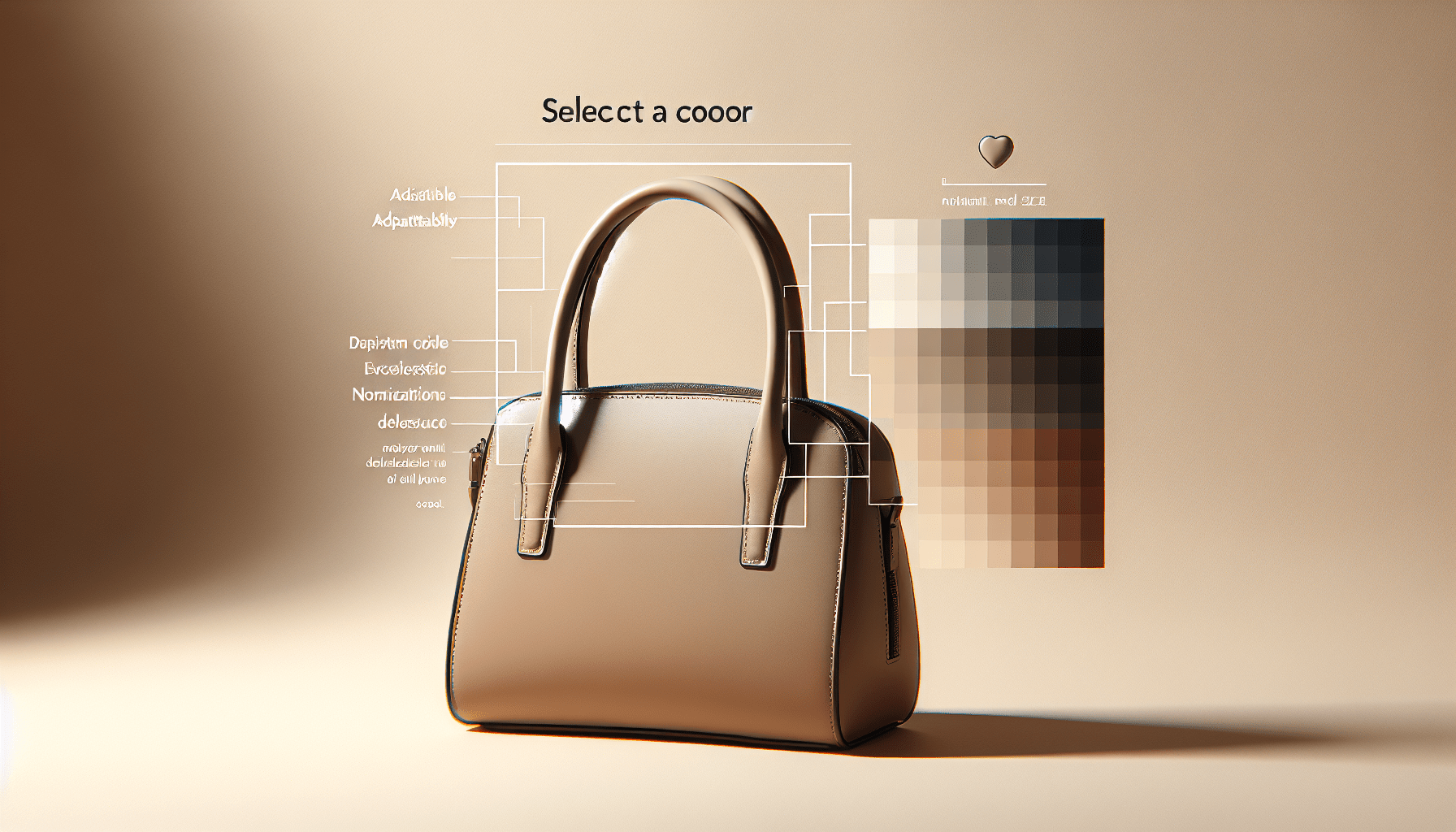How To Measure Torso For Backpack
If you’re planning your next hiking adventure or simply need a new backpack for everyday use, it’s crucial to find the perfect fit. And finding the perfect fit starts with measuring your torso correctly. Knowing how to measure your torso for a backpack ensures optimal comfort and support on your back, preventing any unnecessary strain or discomfort. In this article, we will guide you through the simple steps to measure your torso accurately, giving you the confidence to choose a backpack that fits you like a glove. So, let’s get started!
Importance of Backpack Fit
Finding the right backpack fit is crucial for a comfortable and enjoyable backpacking experience. A poorly fitting backpack can lead to discomfort, pain, and even injuries. It not only affects your physical well-being but also hampers your ability to maximize load distribution, stability, and balance. Therefore, taking the time to ensure that your backpack fits properly is well worth the effort.
Preventing discomfort and injuries
A properly fitting backpack plays a significant role in preventing discomfort and injuries during your backpacking adventures. Ill-fitting backpacks can lead to painful pressure points, chafing, and soreness. It is important to avoid these issues as they can quickly turn a once-thrilling trip into a painful and unpleasant experience. By choosing a backpack that fits well and making necessary adjustments, you can minimize the risk of discomfort and injuries.
Maximizing load distribution
A backpack that fits correctly allows for proper load distribution on your back and hips. This is important because it helps to evenly distribute the weight of your gear, preventing excessive strain on any one area. When the load is distributed evenly, you’ll find that you can carry more weight comfortably and maintain better balance on the trails. A well-fitting backpack ensures that your adventure is not limited by the weight you can carry, allowing you to enjoy the journey with ease.
Improving stability and balance
Proper backpack fit significantly improves stability and balance, especially on challenging terrains. When your backpack is secured properly and fits snugly against your back, it becomes an extension of your body rather than a hindrance. It avoids unnecessary movement that can throw off your balance, enabling you to navigate uneven trails confidently. With a well-fitted backpack, you can maintain stability, ensuring a safer and more enjoyable backpacking experience.
Choosing the Right Backpack Size
To ensure a proper fit and all the benefits it offers, it’s essential to choose the right backpack size. Understanding your torso measurement and considering some key factors will help you make an informed decision.
Understanding torso measurement
Your torso length, which is the distance between your cervical vertebrae and the top of your hip bone, plays a significant role in backpack sizing. It determines the length of the backpack you need to achieve the best fit. It’s important to note that torso length is not equal to overall height. Even individuals with the same height can have different torso lengths, making accurate measurements necessary.
Considerations for backpack sizing
When determining the right backpack size, consider factors such as the gear you plan to carry and intended duration of your trips. Larger backpacks provide more capacity for gear, but if you don’t require that extra space, a smaller backpack may be more suitable. Additionally, if you’re planning on multiday backpacking trips or have bulkier gear, you might need a backpack with a larger volume. Considering these factors will help you narrow down the suitable backpack size options.
Measuring Your Torso Length
Accurate torso length measurement is vital in finding the perfect backpack fit. To measure your torso length effectively, you’ll need a few tools and knowledge of prominent bony landmarks.
Gathering the necessary tools
To measure your torso length, you will need a flexible tape measure, a flat surface to stand against, and a friend or family member to assist you. Having these tools ready ensures a smooth and accurate measurement process.
Identifying prominent bony landmarks
Before taking measurements, you need to identify two prominent bony landmarks on your body: C7 vertebra and the top of your hip bone (iliac crest). The C7 vertebra is the most prominent bone at the base of your neck when you tilt your head forward. The top of your hip bone is the highest point on your sides, slightly above your waistline.
Using a flexible tape measure
With the help of your friend or family member, stand up straight against a flat surface. Locate the C7 vertebrae and the top of your hip bone. Place one end of the flexible tape measure at the base of your C7 vertebra and extend it downwards, following the contour of your back, to the top of your hip bone. The measurement between these two points is your torso length.
Taking accurate measurements
While measuring, make sure the tape measure is in contact with your body, but not too tight. Take multiple measurements to ensure accuracy, as slight variations can occur due to differences in body posture and measuring techniques. Once you have consistent measurements, note them down for future reference when choosing the right backpack size.
Determining Backpack Length
Understanding backpack length options and matching them with your torso length is crucial in ensuring a proper fit and overall comfort.
Understanding backpack length options
Most backpacks come in different lengths to accommodate various torso lengths. Common options include short, medium, and long. Knowing the available length options allows you to narrow down your choices and find a backpack that suits your torso length.
Matching torso length with backpack size
Once you have measured your torso length, refer to the sizing guide provided by the backpack manufacturer. The guide will recommend the appropriate backpack size based on your torso measurement. It’s important to follow these guidelines closely to ensure the best possible fit and avoid potential discomfort or strain caused by an improper match.
Adjusting Shoulder Straps and Hip Belt
Once you have selected the right backpack size, properly adjusting the shoulder straps and hip belt is essential for a comfortable and secure fit.
Positioning the shoulder straps
Start by wearing the backpack and standing straight. Adjust the shoulder straps until they sit comfortably on your shoulders, without digging in or causing any pinching sensations. Tighten or loosen the straps to achieve a snug but not overly tight fit. Properly positioned shoulder straps help distribute weight evenly and prevent unnecessary strain on your shoulders and upper back.
Securing and adjusting the hip belt
After adjusting the shoulder straps, move on to the hip belt. The hip belt is crucial for transferring the weight of the backpack to your hips, which are better equipped to handle heavy loads. Fasten the hip belt and adjust it so that it sits comfortably on your hip bones. It should wrap snugly around your hips without causing discomfort or restricting your movements. Adequate adjustment of the hip belt ensures proper load distribution and stability.
Checking the Fit
With the shoulder straps and hip belt properly adjusted, it’s important to perform a fit check to ensure that everything is properly aligned and comfortable.
Ensuring proper alignment
Stand in front of a mirror or ask your friend or family member to observe your posture while wearing the backpack. Check that the backpack sits centered on your back and is not tilting to one side. The shoulder straps should stay comfortably in place on your shoulders and not slide off. Proper alignment ensures that the backpack is distributing weight evenly and avoids strain or injury caused by improper load distribution.
Testing range of motion
Move your arms and shoulders freely to ensure that the backpack does not restrict your range of motion. You should be able to swing your arms comfortably without feeling constricted. If the backpack’s shoulder straps are too tight or positioned incorrectly, it can limit your mobility and cause discomfort or strain over time.
Examining pressure points
Pay close attention to any pressure points or areas where the backpack is causing discomfort. These pressure points, such as the shoulders, hips, or lower back, may indicate areas that require further adjustment. Make necessary changes to the shoulder straps and hip belt to alleviate any discomfort or soreness. Addressing pressure points promptly enhances overall comfort and prevents potential injuries.
Common Mistakes to Avoid
To ensure an accurate backpack fit, it’s important to be aware of common mistakes that many people make when selecting and fitting a backpack.
Relying solely on height
One common mistake is relying solely on height to determine the appropriate backpack size. As mentioned earlier, torso length is a better indicator of the right backpack fit. Even individuals of the same height can have different torso lengths, so it’s crucial to measure your torso length accurately and refer to the backpack manufacturer’s sizing guide.
Neglecting to measure torso length
Neglecting to measure your torso length and relying solely on guesswork or assumptions can lead to an ill-fitting backpack. Taking the time to measure your torso length ensures that you select a backpack size that offers the best fit and overall comfort. It’s an essential step that should not be overlooked.
Incorrectly fitting the backpack
Another common mistake is improper adjustment of shoulder straps and hip belt. Neglecting to properly position and adjust these straps can lead to discomfort, strain, and even injury. It’s important to follow the manufacturer’s instructions and take the time to make the necessary adjustments for a secure and comfortable fit. With a properly fitted backpack, your backpacking experience will be significantly improved.
Considering Additional Factors
While accurately measuring your torso length and adjusting the backpack straps are critical, there are additional factors to consider for an optimal fit.
Weight distribution preferences
During your backpacking adventures, you may have personal preferences regarding weight distribution. Some individuals prefer a higher center of gravity, while others prefer a lower one. When choosing a backpack, be mindful of how it distributes weight and whether it aligns with your preferences for balance and comfort.
Carrying style and backpack features
Consider your preferred carrying style, whether you prefer an internal frame or an external frame backpack. Internal frame backpacks offer a sleeker, more streamlined design that is better suited for off-trail adventures. External frame backpacks provide increased ventilation and better weight distribution for heavier loads. Additionally, pay attention to features such as pockets, straps, and accessibility options to ensure they align with your specific backpacking needs.
Seeking Expert Advice
If you’re unsure about measuring your torso length or selecting the right backpack size, it’s always a good idea to seek expert advice.
Visiting a specialty store
Specialty outdoor stores often have knowledgeable staff who can assist you in finding the right backpack fit. They can guide you through the measurement process, explain the different backpack options available, and help you make an informed decision based on your needs and body type. Taking advantage of their expertise can save you time and effort in finding the perfect backpack.
Consulting with experienced backpackers
If you have friends or acquaintances experienced in backpacking, consider seeking their advice. They can share their personal experiences and offer valuable insights into finding the right backpack fit. They may also provide tips and recommendations that can make your decision-making process easier. Their firsthand knowledge can be invaluable in ensuring a well-fitted backpack.
Conclusion
Investing time and effort into accurately measuring your torso length and finding the right backpack fit is a crucial step for enhancing your backpacking experience. A well-fitted backpack prevents discomfort, distributes weight effectively, improves stability and balance, and minimizes the risk of injuries. By following the proper measurement techniques, adjusting the shoulder straps and hip belt, and thoroughly assessing the fit, you can find a well-fitted backpack that will make your backpacking adventures more enjoyable and rewarding. Remember, a well-fitted backpack is an investment in your comfort and safety on the trails.




